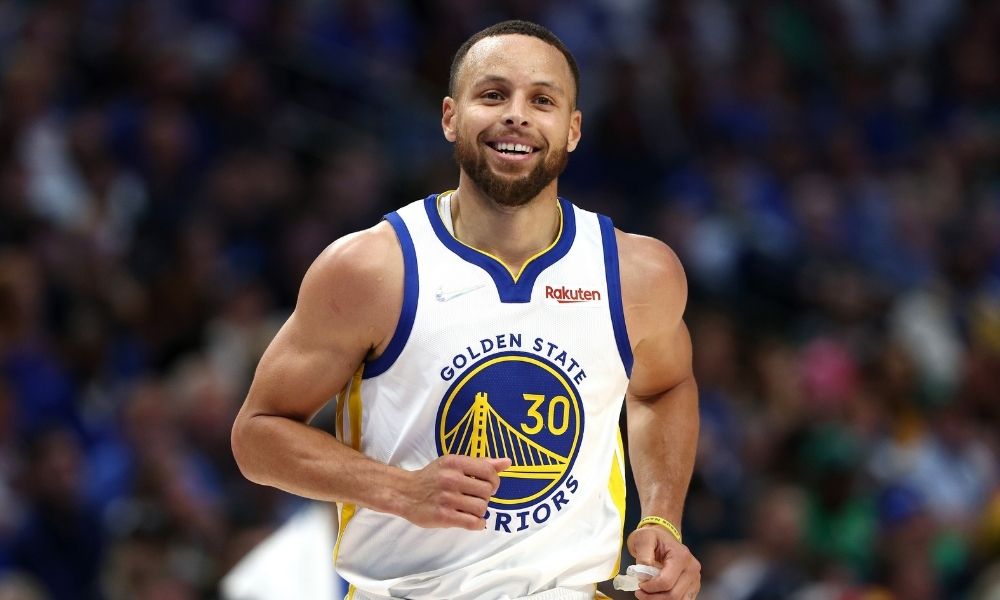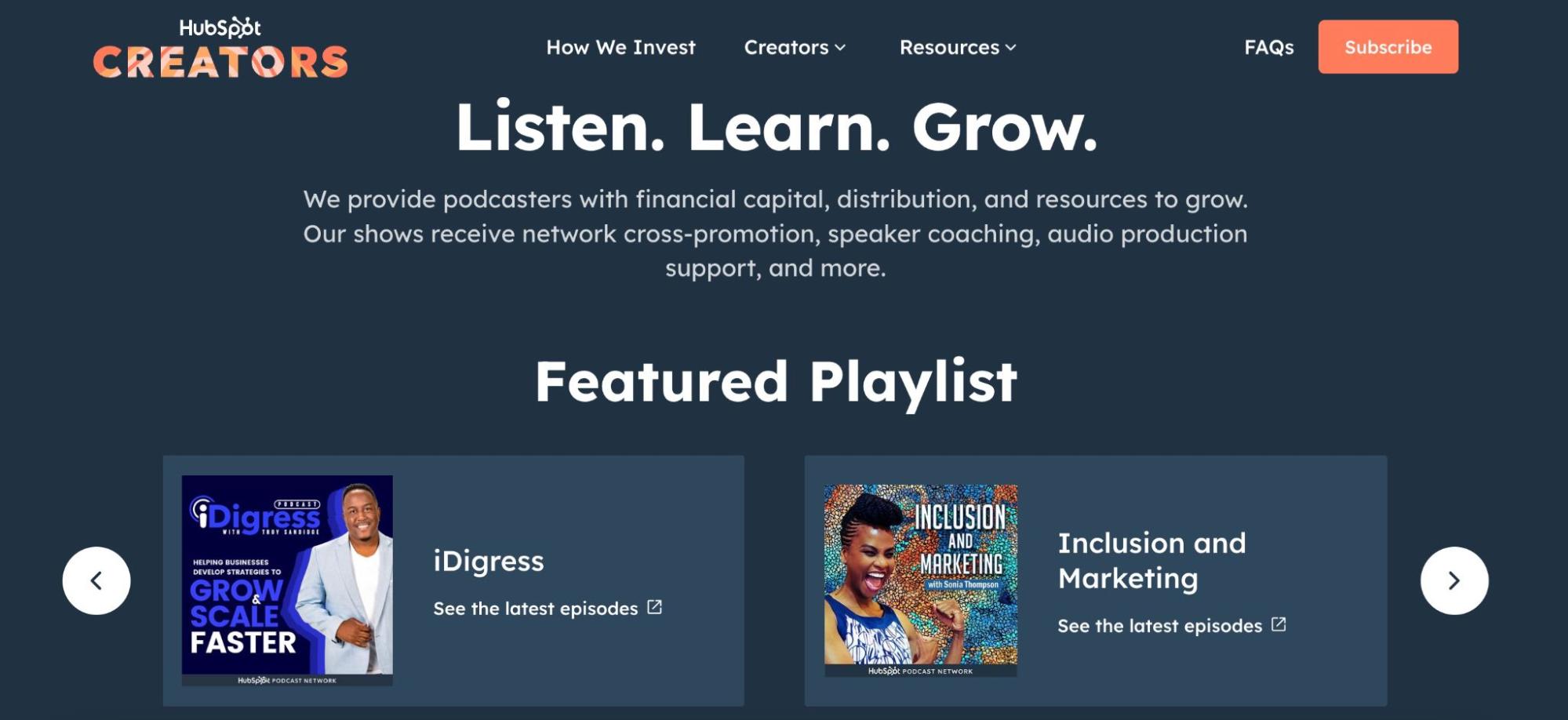Marketing, at its worst, can make your brand feel like someone pushing a dud product onto a customer. If your customers only ever hear about your pricing and how much better you are than your competitors, they might have a difficult time establishing a personal relationship, a bond with your brand. And when they don’t feel that bond, it can be harder to convince them to buy from you again and again.
创造这种个人关系在你的目标et audience is to build brand awareness. In the past, that could look like buying large-scale ads and placing them everywhere—like brands such as Tide or Coca-Cola do. Now, you can achieve a similar effect through a seeding campaign. Seeding campaigns make your brand seem more like a reliable friend than an aggressive salesperson. Here’s what seeding sales means, and how to use seeding campaigns to generate revenue.
表Contents
Shopify Collabs: Find the right influencers who will drive sales
Find the right creators to collaborate with to promote your brand and products to new audiences.
What is seeding in marketing?
Seeding is asales strategyof “planting the seed” of your product or service with your prospect. It can involve educating potential customers in a way that adds value for them and dropping a series of friendly hints about the products or services you offer. For example, a retailer may offer in-person style consultations. The purported goal is to help you identify your personal style, but also to implant the idea that the clothes it offers could fulfill your style needs.
Seeding inmarketinginvolves storytelling campaigns to create positive feelings around your brand so potential customers feel positive about it, rather than promotional ad campaigns focused on your products. Often this involves content seeding such as partnering with a social media influencer. The influencer would mention the business’s product to their audience in a casual way, but they wouldn’t frame it as an official testimonial or endorsement. This seeds the product to the influencer’s audience, which increases the business’s brand awareness, and the likelihood a member of the influencer’s audience will buy the product.
How can seeding benefit your business?
By creating regular, friendly touchpoints with your customers and showing them your values align with theirs, you nurture relationships in a way that moves them toward being loyal customers. Seeding campaigns are an effective way to create trust and demand with your target audience in more subtle ways than ads do. For example, a natural deodorant brand could create short videos telling the stories of their top customers’ natural lifestyles or in collaboration with other natural brands.
Brands that compete purely on price may not need to form a personal relationship with their target customer. But if your brand differentiates itself on anything other than price, nurturing relationships with them is essential. Customers that identify with your brand are more likely to reorder from you because they’ve bought into yourbrand’s story.
How to seed sales through marketing
- Develop identity-driven messaging
- Create value-added content
- Reach your customers where they already are
Seeding campaigns succeed when they subtly build brand affinity. This means offering customers and potential customers value, connecting with them, and meeting them where they are. This is the opposite of traditional advertising campaigns that can be interruptive. Follow these steps to seed sales through marketing:
1. Develop identity-driven messaging
Seeding sales starts with figuring out what your messaging is, what your business is all about, and what you have to offer that’s not just your product. One of the best ways to do this is to show your brand’s values align with your customers. Start by asking yourself what you know about yourtarget market. What other products do they buy? What do they do for fun? What kind of person do they see themselves as? Conducting customer interviews or reading reviews on your competitors’ sites can help you paint this picture.
Sponsorship is a classic example of identity-driven messaging. For example, the online retailer Rakuten has begun sponsoring sports teams like the Golden State Warriors and FC Barcelona, with the implied message being a gentle reminder that “These are the biggest teams in the world, and we’re one of the biggest stores in the world.” Other, more accessible examples of this for smaller brands are sponsoring podcasts and local events. The goal of sponsorship is to show you share values with those audiences.

2. Create value-added content
Seeding attempts to build affinity for your brand. A key way to do this is to create content that your customers and potential customers want to consume. It could be educational or entertaining for them without harping on why they should buy your product.
One way brands can do this is by providing free guides or resources. This can create value and affinity for the customer by simply adding joy to their day.
3. Reach your customers where they already are
There’s a reason so many seeding campaigns happen on social media platforms. Millions of people passively scroll through them everyday, subtly absorbing brand information. When people see non-sales-focused content on the channels they’re already on, they become more aware of your business. When they are ready to make a purchase, they may be more likely to think of your brand.
Seeding through social mediais even more effective when combined withinfluencer marketing. This is a strategy where brands pay individuals with engaged social media followings to use the brand’s product in their everyday life. Alternatively, you might sponsor the influencer’s latest video. Influencer seeding has become a popular way to seed sales because the customer hears about your product from a person they already engage with and trust, rather than from an impersonal ad.
Seeding campaign success metrics
Unlike other types of marketing campaigns, the goal of a seeding campaign isn’t to drive immediate sales, but instead to build brand affinity and trust, leading to sales sometime down the line. Here are a few key metrics to help you gauge the success of a seeding campaign:
- Brand awareness in the target audience.A seeding campaign is successful if the people whom you want to know about your business know about it. An increase in branded searches and social media mentions of your brand can signal a rise in brand awareness.
- Revenue.A successful seeding campaign should increase revenue over time. Since it can take over a year to see results, wait at least a year after the campaign has ended to analyze this metric.
- Reach.Social media platforms include data on reach, or the number of people who see your seeding campaigns, in their analytics. Some brands also measure qualified reach, which is the number of people reached who fit the target audience definition. This is more targeted but can require more custom calculations.
- Key engagements.A key engagement is any action that indicates a person has developed more brand affinity through active engagement with the brand. For example, it could be people who watched a YouTube ad through to completion, people who download a free guide, or people who visit a podcast-ad-specific landing page.
Examples of successful seeding campaigns
Athletic Greens (AG1)
Athletic Greens is a supplement brand with a single product, the AG1, a nutritional powder you stir into water. The brand has grown over time with a series of strong seeding-focused campaigns. It sponsors health-oriented podcasts, such asHuberman Lab, but also tangentially related podcasts that it has identified resonate with its target audience, such asPod Save AmericaandThe Knowledge Project.
View this post on Instagram
They also partner with top-performing athletes like the racecar driver Lewis Hamilton, seeding the influencer’s audience. The business combines its seeding campaigns with more targeted product-focusedsocial media advertisingfor a holistic marketing strategy.
HubSpot
HubSpot is a premium CRM platform that provides marketing and sales tools primarily to B2B companies. It invests heavily in seeding campaigns to ensure its audience (business owners and marketing and sales leaders) knows and likes them before they’re ready to buy. In service of this, it created its own media network of seed content, which includes a robust blog, free resources, and their own podcast network.

Tapcart
Tapcart is an integration available in theShopify App Storethat allows merchants to build custom mobile app experiences for their store. The business invests heavily in seeding to both its community and the public, which allows it to stay top-of-mind with its target audience without necessarily running ads. Some examples of the ways it does this are by running itsown direct-to-consumer community, creating public-facingpartnerships with athletes like LeBron James(and his UNINTERRUPTED athlete empowerment brand) and sponsoring podcasts of industry thought leaders like Nik Sharma.

Seeding campaigns FAQ
How do you identify the target audience for seeding?
你的目标受众进行播种活动the same as your overall target audience. You identify it the same way you do any other target audience—through market research, audience demographic analysis, and customer interviews.
What channels are most effective for seeding campaigns?
The most effective channels for seeding are places where customers are already at ease and primed to be informed or entertained. For modern businesses, those channels include social media, podcasts, and video.
How long should a seeding sales campaign last?
Since the goal of seeding campaigns is to drive long-term sales, the campaigns themselves typically last at least a year. However, the messages and channels within that campaign can change more often. For example, it’s common to change your messaging around the winter holidays or summer and run seasonal seeding messaging. For example, a health food brand could share content about how to stay fit during the holidays as part of its winter seeding messaging.
Can seeding campaigns be risky for businesses?
Seeding campaigns can pose a financial risk if they aren’t effective. Also, if you put the majority of your marketing spend into seeding strategies at the expense ofperformance marketing, you might miss out on short-term sales goals. The strongest overall marketing strategies involve both elements of seeding and direct marketing that target near-term and long-term sales.
When should a business pivot from a seeding sales strategy to a broader marketing strategy?
Businesses should consider moving away from a seeding strategy when they have important short-term revenue goals or when their target audience is in a buying mindset. If a business needs to hit a quarterly sales target to remain profitable, a seeding strategy in place of a product- or promotion-focused strategy could lead to lower short-term sales.
If a customer is ready to buy, a seeding strategy will also be less effective and useful for them. For example, during Black Friday or Cyber Monday, customers are already primed to shop. During this time, brands are better off focusing on discounts or product value instead of value-added content or identity messaging to capture sales.

